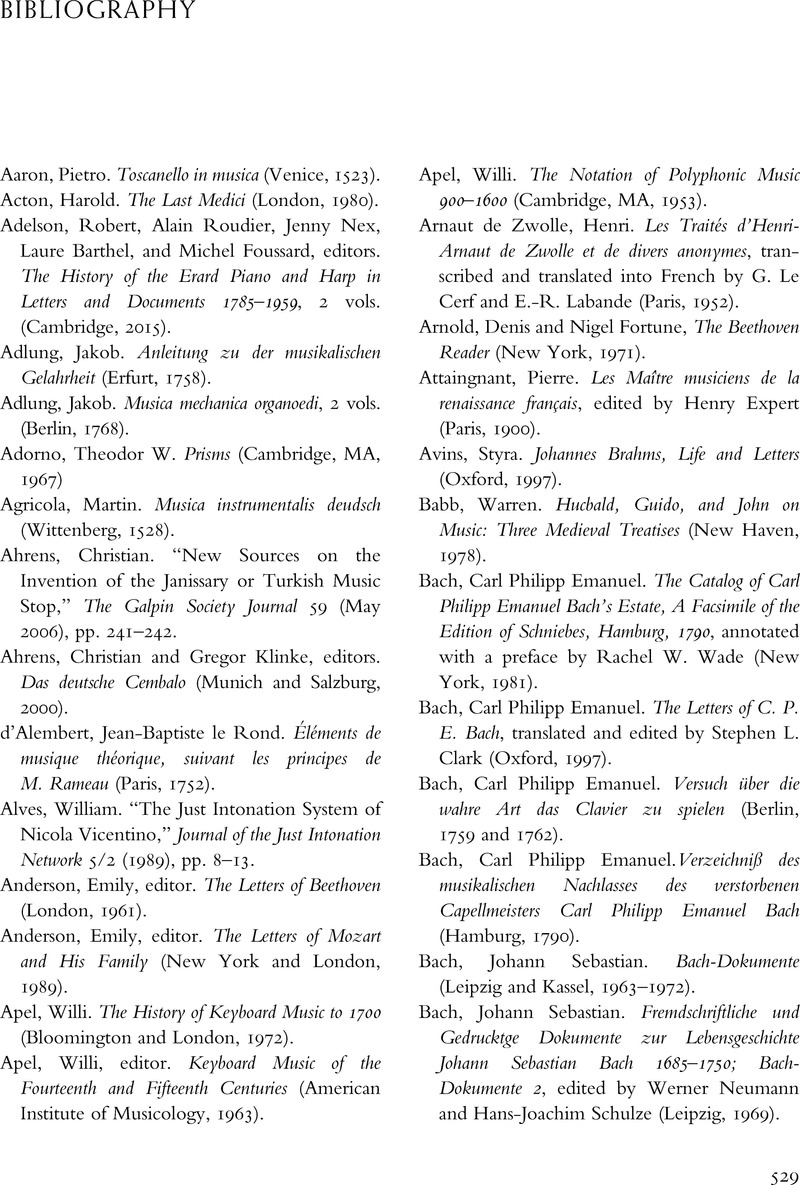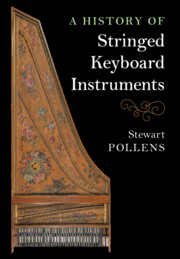Book contents
- A History of Stringed Keyboard Instruments
- A History of Stringed Keyboard Instruments
- Copyright page
- Contents
- Figures
- Tables
- Preface and Acknowledgments
- Pitch Notation Conventions
- One Keyboard Origins
- Two Principles of Design and Construction
- Three The Henri Arnaut Manuscript
- Four The Renaissance
- Five The Baroque Period
- Six The Invention of the Piano
- Seven The Classical Period
- Eight The Romantic Era
- Nine Stagnation and Revival
- Bibliography
- Index
- References
- A History of Stringed Keyboard Instruments
- A History of Stringed Keyboard Instruments
- Copyright page
- Contents
- Figures
- Tables
- Preface and Acknowledgments
- Pitch Notation Conventions
- One Keyboard Origins
- Two Principles of Design and Construction
- Three The Henri Arnaut Manuscript
- Four The Renaissance
- Five The Baroque Period
- Six The Invention of the Piano
- Seven The Classical Period
- Eight The Romantic Era
- Nine Stagnation and Revival
- Bibliography
- Index
- References
Summary

- Type
- Chapter
- Information
- A History of Stringed Keyboard Instruments , pp. 529 - 550Publisher: Cambridge University PressPrint publication year: 2022



